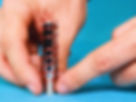Homopolar Motor Science Project: A Dance of Electricity and Magnetism
- James Hambley
- Aug 15, 2023
- 2 min read
Attention, emerging scientists and inquisitive learners! Dive deep into the exciting realm of the Homopolar Motor Science Project today. We'll demystify the simplest motor out there: the homopolar motor. Using basic materials like a battery, wire, and a pinch of enthusiasm, we'll transform these static materials into dynamic motion. This project brilliantly showcases the relationship between electricity and magnetism.

Materials for Your Homopolar Motor Science Project
A fresh AA or AAA battery (for best results)
Circular neodymium magnets (To make it easier size the magnets to your battery)
Enamel-coated copper wire
Wire clippers and pliers
Sandpaper
Step-by-Step Guide to Creating a Homopolar Motor
1. Crafting the Wire:
Snip an approximately 4 - 6 inches segment of the enamel-coated copper wire.
Employ sandpaper to remove a small bit of enamel from both wire tips.
Mold the wire into a design of your choice. Commonly, a spiral with a base is crafted, but let creativity reign! Ensure one wire end contacts the magnet, while the other can be in contact with the battery's positive terminal.
2. Homopolar Motor Assembly:
Affix the neodymium magnet to the battery's flat (negative) terminal.
Stand the battery with the magnet at the base.
Gently position the crafted wire on the battery. One wire end should connect with the battery's top (positive terminal), and the other should touch the magnet.
3. The Homopolar Motor Science Project in Action:
It will likely take a few minutes of bending and repositioning of the wire before it starts working. When the ends are making very gentle contact the wire will whirl around the battery, giving you a hint at the relationship between electricity and magnetism.
Safety Precautions: This experiment runs on a short circuit which can cause the battery and wire to get very hot. Do not leave the motor running for more than a few seconds at a time and be careful not to burn yourself or anything else with the battery or wire.
Deep Dive into the Homopolar Motor Science Project
Wire Wonders: Test various wire configurations. How do these influence the homopolar motor's speed and dynamics?
Battery Exploration: Examine batteries of assorted sizes or power. Notice any alterations in the homopolar motor's function?
Magnetic Variability: Introduce magnets of varying power or layer multiple ones. How does the magnet's potency affect the homopolar motor's movement?
Wire Specs: Use diverse wire diameters or materials for the Homopolar Motor Science Project. Notice any performance shifts?
Rotation Rules: Explore what dictates the wire rotation direction. What transpires if the battery is inverted?
Coil Intricacies: Design coils with additional loops or detailed patterns. How do such modifications affect the motor's movement?
Material Mix: Incorporate materials like aluminum foil or conductive tape. Observe their impact on the motor's action.
The Homopolar Motor Science Project, with its inherent simplicity, enlightens young enthusiasts about the dynamic dance between electricity and magnetism. Watching a static wire evolve into a spinning spectacle sparks curiosity and reiterates the wonders embedded in daily life. So, gear up and let the Homopolar Motor Science Project set your world in motion!


